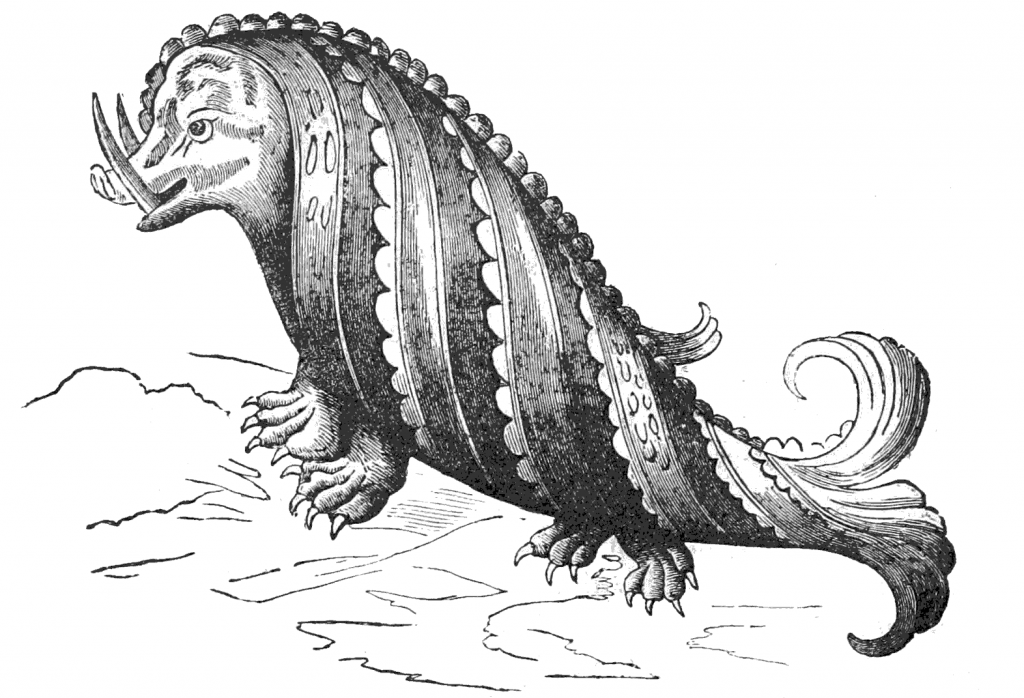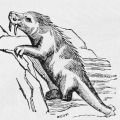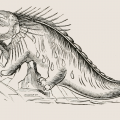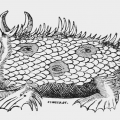Looking a bit like something created by a modern-day artist practicing their Zen-doodling skills, this vaca marina drawing actually dates back to the 16th Century. He is one of 6 walrus drawings from Historia de Gentibus Septentrionalibus (History of the Northern Peoples) by Olaus Magnus. Magnus’ work covered Scandinavian and Swedish folklore and history. While it’s considered a valuable work for his depictions of life in the region, clearly this walrus comes from his own imaginings.
Vacca Marina, as he called it, does have a silhouette resembling that of a walrus. But, that’s where the similarity ends. Rows of scalloped armor spiral from the top of its head down to the base of its tail. A large, split and flared tail resembles that of a pretty goldfish. Four, almost non-existant legs end with bear-like feet with equally bear-like claws. While his dorsal plating isn’t as intimidating as some of the others of Magnus’ walruses, this one certainly has a pair of ferocious looking tusks. And, yet, it almost seems as if vacca marina is smiling.
This scanned illustration is from History of North American pinnipeds: a monograph of the walruses, sea-lions, sea-bears and seals of North America which was published in 1880 and written by Allen, J. A. (Joel Asaph), 1838-1921. However, the original design dates back to 1555 when this creature sprung from Magnus’ imagination.
The image shown above has been slightly shrunk to fit the page. However, if you would like to access the full-size version of our vacca marina drawing, just click on this one.
This image is copyright free and in the public domain anywhere that extends copyrights 70 years after death or at least 120 years after publication when the original illustrator is unknown.



